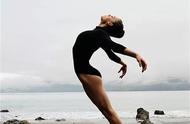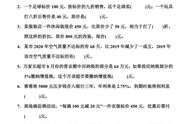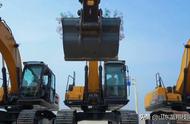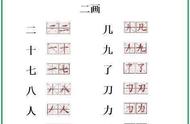
胖瘦走路姿势对比丨Ian Green, Arakon N
压力又大又偏,可能腰腿疼胖了之后一般不喜欢运动,因为费力,也因为身体各处经常疼痛不舒服。研究显示,胖人比瘦人更容易出现肌肉、韧带、关节及骨骼的损伤,并因此感到疼痛。而且关节疼不是老了才会有,60%肥胖儿童每月至少有一个关节疼一次[14]。
感觉各处疼痛,主要是因为肌肉骨骼承受的压力太大。走路时全身重量都压在脚上,胖人容易出现脚痛。体重每增加一斤,膝关节等承重关节压力增加四斤,所以髋膝疼痛常见[14-16]。
长胖后不仅肌肉骨骼压力大,而且可能由于姿势控制困难,出现脊柱曲度异常、膝外翻及过伸、扁平足。这些情况下,骨骼排列不正,本应平均分布的压力变得集中,受压最严重的部位可能难堪重负,出现损伤。比如,胖人常见的膝外翻(又称X型腿)增加膝关节外侧软骨压力,可能会对软骨造成难以恢复的伤害[14]。
胖人关节压力大,帮助减轻压力的关节周围肌肉力量却相对弱,关节软骨被迫承受更多的冲击力,也就更容易受到损伤[16, 17]。

正常大小腿基本在一条直线上,膝外翻角度变大丨参考文献[18]
减肥,还能恢复健步如飞长胖导致这么多问题,减肥后还能恢复原样么?大部分是可以好转的,而且减去的脂肪越多,效果越明显。
只是,关节软骨如果已经受到损伤,完全恢复很困难。但关节疼痛可以缓解,只要减轻体重5%就有效果,减10%以上改善更明显[19]。
但减肥时,胖人如果照搬瘦人的运动方式,比如每天跑步跳操,可能没几天膝盖就疼得动不了。如果体重比较大,平时又很少运动,可以先从不负重的形式开始(如骑车,不把体重全部压在下肢),之后逐渐增加负重运动。蹦跳类的动作对关节压力非常大,很容易受伤,需要特别小心[20]。
除了减肥时常用的有氧运动,最好也加入抗阻运动(增强力量的训练)。这样不仅增加热量消耗,提高基础代谢,帮助减重,还能加强肌肉力量。只有相对力量强了,才能降低关节压力,减少日常活动的疲劳感[16]。
最后,刚开始运动的时候慢一点,不要摔倒啦。
参考文献
[1] Willener AS, Handrich Y, Halsey LG, et al. Fat King Penguins Are Less Steady on Their Feet. PLoS One. 2016;11(2):e0147784.
[2] Meng H, O'Connor DP, Lee BC, et al. Alterations in over-ground walking patterns in obese and overweight adults. Gait Posture. 2017;53:145-150.
[3] Summa S, De Peppo F, Petrarca M, et al. Gait changes after weight loss on adolescent with severe obesity after sleeve gastrectomy. Surg Obes Relat Dis. 2019;15(3):374-381.
[4] Meng H, O'Connor DP, Lee BC, et al. Effects of adiposity on postural control and cognition. Gait Posture. 2016;43:31-37.
[5] Teasdale N, Hue O, Marcotte J, et al. Reducing weight increases postural stability in obese and morbid obese men. Int J Obes (Lond). 2007;31(1):153-160.
[6] Hue O, Simoneau M, Marcotte J, et al.Body weight is a strong predictor of postural stability. Gait Posture. 2007;26(1):32-38.
[7] H. Selçuk, N. Sermenli Aydın, H. Keklicek. The interaction of foot biomechanics and body mass index with single leg stance dynamic balance in healthy young. Gait Posture. 2018;65:315.
https://doi.org/10.1016/j.gaitpost.2018.06.202
[8] Villarrasa-Sapiña I, García-Massó X, Serra-Añó P, et al. Differences in intermittent postural control between normal-weight and obese children. Gait Posture. 2016;49:1-6.
[9] Cau N, Cimolin V, Galli M, et al. Center of pressure displacements during gait initiation in individuals with obesity. J Neuroeng Rehabil. 2014;11:82.
[10] Wearing SC, Hennig EM, Byrne NM, et al. The biomechanics of restricted movement in adult obesity. Obes Rev. 2006;7(1):13-24.
[11] Gallagher D, DeLegge M.Body composition (sarcopenia) in obese patients: implications for care in the intensive care unit. JPEN J Parenter Enteral Nutr. 2011;35(5 Suppl):21S-8S.
[12] Rosso V, Agostini V, Takeda R, et al. Influence of BMI on Gait Characteristics of Young Adults: 3D Evaluation Using Inertial Sensors. Sensors (Basel). 2019;19(19).
[13] Lai PP, Leung AK, Li AN, et al. Three-dimensional gait analysis of obese adults. Clin Biomech (Bristol, Avon). 2008;23 Suppl 1:S2-6.
[14] Steinberg N, Nemet D, Pantanowitz M, et al. Gait Pattern, Impact to the Skeleton and Postural Balance in Overweight and Obese Children: A Review. Sports (Basel). 2018;6(3).
[15] Messier SP, Gutekunst DJ, Davis C, et al. Weight loss reduces knee-joint loads in overweight and obese older adults with knee osteoarthritis. Arthritis Rheum. 2005;52(7):2026-2032.
[16] Vincent HK, Heywood K, Connelly J, et al. Obesity and weight loss in the treatment and prevention of osteoarthritis. PM R. 2012;4(5 Suppl):S59-67.
[17] Capodaglio P, Vismara L, Menegoni F, et al. Strength characterization of knee flexor and extensor muscles in Prader-Willi and obese patients. BMC Musculoskelet Disord. 2009;10:47.
[18] Than P, Szuper K, Somoskeöy S, et al. Geometrical values of the normal and arthritic hip and knee detected with the EOS imaging system. Int Orthop. 2012;36(6):1291-1297.
[19] Christensen R, Bartels EM, Astrup A, et al. Effect of weight reduction in obese patients diagnosed with knee osteoarthritis: a systematic review and meta-analysis. Annals of Rhematic Diseases. 2007;66(4):433–439.
[20] Ling C, Kelechi T, Mueller M, et al. Gait and Function in Class III Obesity. J Obes. 2012;2012:257468.
作者:代天医
编辑:odette

本文来自果壳,未经授权不得转载.
如有需要请联系sns@guokr.com














